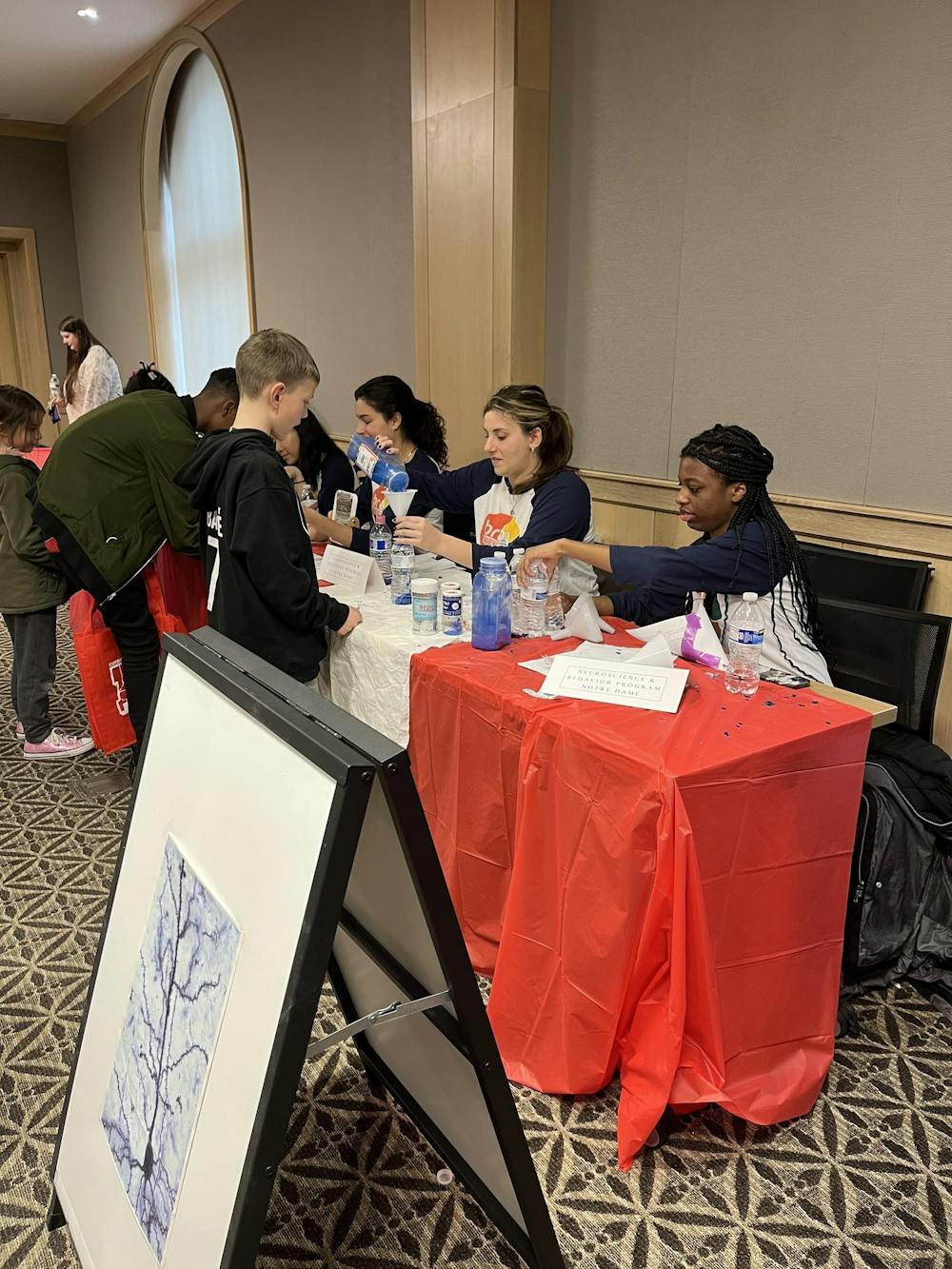The main branch of the St. Joseph County Public Library hosted its 32nd Science Alive event Saturday, becoming a hub for children to exclaim at bubbling test tubes and create their “brain” in a bottle. From stage events like Paleo Joe’s techniques of fossil collection to tables discussing the Great Lakes ecosystem, kids and parents of all ages opened their minds to the expanse of science.
Wanda Dudley, a program coordinator for the event who tries to “add a little sparkle” wherever she goes, worked alongside a team to invite more than 40 exhibitors in an effort to teach the community the “amazing things that science has to offer.”
“We try to bring a little more diversity to the stage shows,” Dudley said. “Anything from the physics of ballet to science you can do at home to an award-winning paleontologist. [The event is there to] engage the audience, the kids, the parents and have fun learning at the same time.”
Dudley said the event had an amazing turnout. She added that while this is her first year coordinating it, Notre Dame has been a part of the event for many years.
Indeed, Notre Dame clubs, departments and lab groups were found throughout the library to create looks of wonder and curiosity. The University’s Rocketry Club took participants to new heights showing off their latest rocket.
While the University’s participants were there to provide a glimpse into science at Notre Dame, many of the groups said they had a goal of becoming more engaged with the South Bend community as well.
Diane Wright, a program coordinator for Notre Dame's neuroscience and behavior major, led an activity where kids hit a target while wearing glasses that distort vision.
Wright spoke about the “group of students who are really dedicated to taking neuroscience into the community and showing people just everyday things you can do to improve your brain health.”
Doctorate student Joshua Morales talked about the importance of outreach for the Jaffe Lab, which has participated in Science Alive in the past, bringing solid-state chemistry to new audiences. This year, the group made batteries out of limes and dazzled people with fool’s gold.
“Talking with the people, and seeing the smiles on their faces, that’s the reason why we do all of this,” Morales said.
The Notre Dame Chemistry Club president, Cecilia Leber, and vice-president, Julia Florek Carlson, said there was push to provide members more volunteering opportunities.
“It seems like we have a lot of excitement with people in the major and in the club for wanting to go out in the community and do more outreach,” Leber said. “We definitely want to keep those opportunities available.”
With the help of other club members, they brought acid-base chemistry to Science Alive. Junior Sara Murray, the social outreach coordinator of the club, spoke of some of the kids’ reactions to blowing up a balloon with citric acid and baking powder.
“A lot of the kids can understand the basic parts of it,” she said. “Some of them will yell out, ‘Oh, it’s going to explode!’ And, obviously, they’re getting at the point.”
For some, bringing science to kids is rewarding on a more personal level. Third-year graduate student Mawuli Degbevi of the Tsui Group, who demonstrated the properties of quantum dots, did not have a lot of opportunities like Science Alive growing up. For him, the event is a chance for “showing [the kids] the potential of what they can do with science.”
The potential of science is expansive and, with the Go Research Group, colorful. Doctorate student Ibu Akintola, working with the organization and part of the aerospace and chemical engineering department, explained the science behind the mesmerizing plasma globes and how a tesla coil can be used to reveal the colorful array of gasses like argon and krypton.
Kids spun in circles staring at the ceiling lights with “diffraction glasses that split white light into different colors using the prism mechanism,” marveling at the rainbows it created, Akintola said.
Akintola also discussed the importance of Notre Dame reaching out into the community.
“It’s always a great way to just introduce kids to whatever they’re doing, whether it’s science, art, anything,” Akintola said. “I think the kids really enjoy just experiencing what other people are doing.”
Doctorate student Sam Porter with the Nuclear Science Laboratory and the physics and astronomy department, echoed the importance of bringing Notre Dame science to younger audiences.
“Kids as young as 8 years old can understand the basics of nuclear science,” Porter said. “I think this does a really good job of showing people that a lot of the basics of science is really accessible.”










